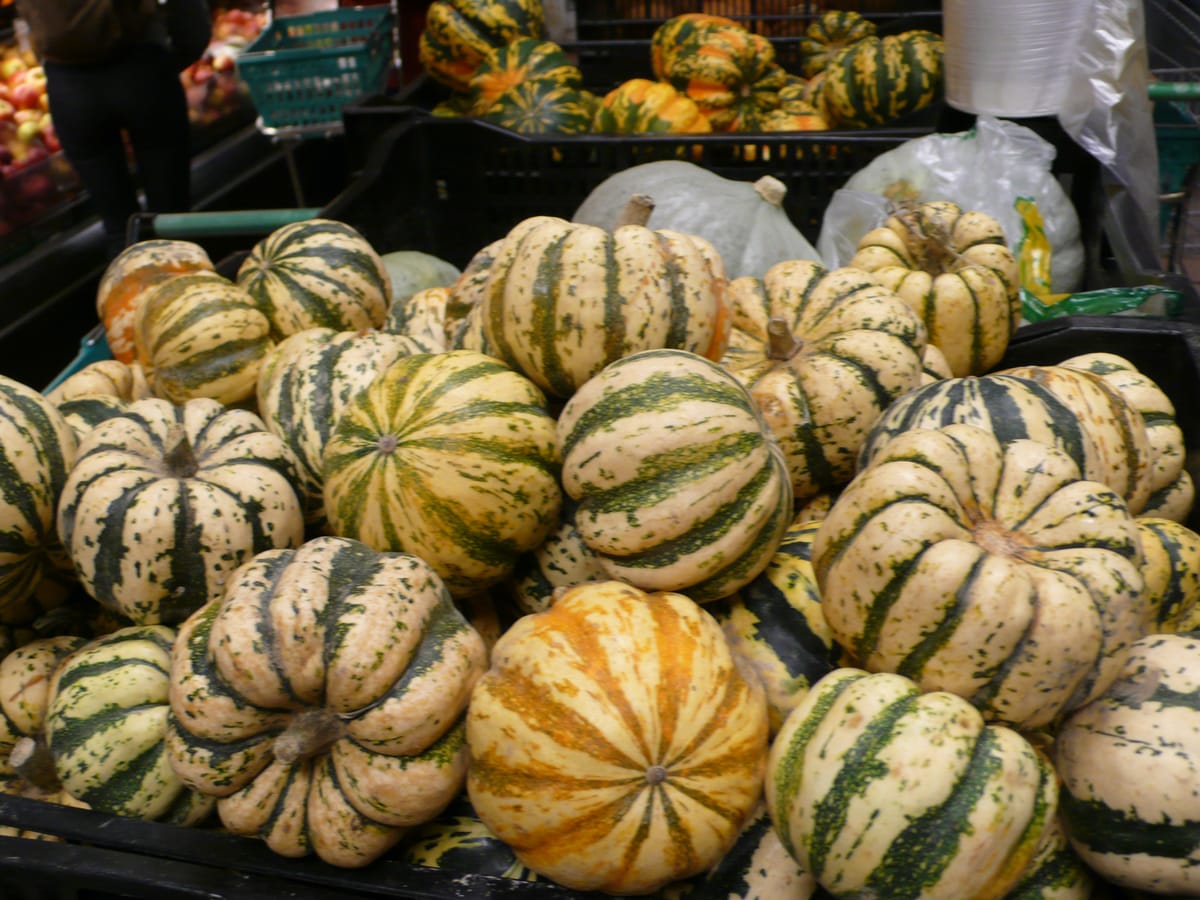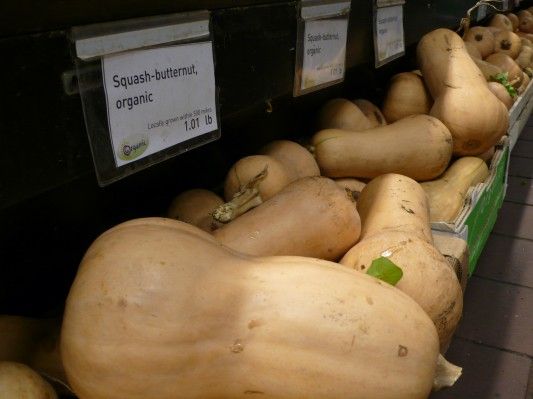This Week at the Coop: Winter Squash


By the end of November, the bounty of locally harvested fruits and vegetables has ceased to crowd the Park Slope Food Coop’s shelves. Instead, we are left with tropical imports and winter produce like brussels sprouts. A consolation for fewer tasty tomatoes and wilted greens is the variety and quantity of winter squash that pop up this time of year.
It’s a carnival of gourds. There’s a great many choices, fron the ginormous Hubbard to the petite sweet dumpling, and a wide variety of ways to prepare them.
Squash differ in texture and in taste, but the variations are relatively minor. The flesh can run from light yellow to a deep orange, almost red. Generally, the more intense the color, the sweeter the flesh. So the darker orange butternut has a stronger, sweeter taste than the paler acorn squash. Some squash have a thick, inedible skin – the Hubbard squash is so thick-skinned it requires determination. Some, such as acorn or delicata, have skin so thin it can be eaten.
The Coop’s varieties change from week to week, though some, like butternut and acorn, can be found year round. Around this time of year you’ll find carnival, Hubbard, the intensely flavorful sucrine du berry, the very sweet (and very adorable) red kuri, and the inadequate pasta substitute spaghetti squash. The thicker the skin, the better the gourd will store. At room temperature, the more durable will last many months. Pick squash without imperfections, blemishes, nicks or dents if possible. Physical imperfection can be a sign of frost damage or bad handling, and will shorten the shelf-life of the vegetable.
Having selected your squash you must now choose how to cook it. There are several basic ways, all of which should yield good results.
The easiest is the nuclear option. Wash the squash and pop it into the microwave. Cooking time depends on the size of your squash and the sizzle of your microwave, but a medium sized acorn might take 10 minutes. Best not to leave the fruit untended, though, as it could explode. If it starts making funny noises like whistling or squeaking, take it out (though any sound coming from dead vegetable matter is cause for concern). Symmetrical varieties like acorn, delicata, and carnival do well with this method. Incidentally, the skin of these three winter squash is edible. The squash is done when it gives to the touch (it should have the firmness of a peeled banana). Halve the squash and scrape out the seeds and stringy bits.

Roasting squash takes a little more effort, but the result is sweeter and more delicious. Butternut or delicata are ideal. Cut the peeled and seeded butternut (or the unpeeled and seeded delicata) into one inch cubes or slices. Toss with olive oil, salt, and brown sugar. Roast (I prefer a glass pan) at 400 degrees for 30 minutes (delicata) to an hour (butternut), stirring occasionally. Another good roaster is the japanese inspired kabocha.
Soup: It’s hard to believe how easy it is to make a winter squash soup. Try this: saute onions (or better yet leeks) until they begin to soften, about 5 minutes. Add cubed (and peeled, if necessary) squash. Cook at a medium-high heat, stirring often, until squash starts to brown, about 20 minutes. Add salt and pepper and fresh herbs if you’ve got ’em. Thyme and sage are nice additions, though not crucial. Grate some nutmeg in there. Add chicken or vegetable stock so that the vegetables are completely submerged. If the stock is strong, dilute it with some water. Cook until squash is soft and mushy, another 10-20 minutes. Throw it in a food processor or blender (or use an immersion blender) and puree until smooth. Add salt to taste. If it is too thick, add water until it gets to the right consistency. Too thin? Add more squash (just kidding).




